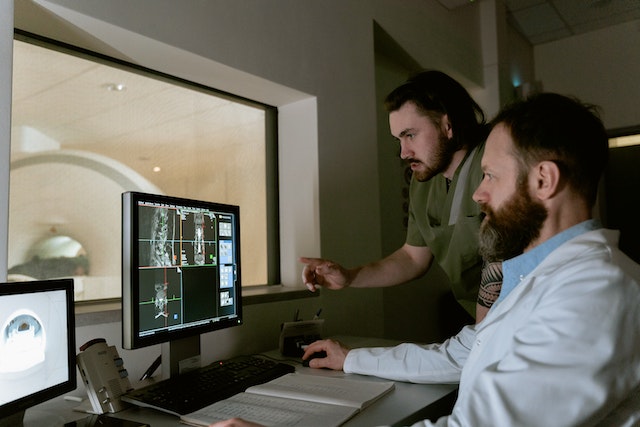In the bustling environment of a modern hospital, where urgency is the norm and every moment counts, the radiology department serves as a critical hub of diagnostic decision-making. Radiologists, entrusted with the vital task of interpreting medical images, navigate a constant stream of interruptions that disrupt their focused analysis. These interruptions, though often necessary for patient care, can pose a significant challenge, potentially impeding the accuracy and efficiency of radiological diagnoses with potentially detrimental consequences for patient outcomes.
How Often are Radiologists Interrupted?
A recent study at Nationwide Children’s Hospital investigated interruptions’ impact on radiologists’ efficiency and patient care in their pediatric radiology department. Thirteen pediatric radiologists were observed for 61 hours, revealing common interruptions that disrupted workflows and slowed patient care. Interruptions fell into three categories: time spent interpreting studies, active interruptions initiated by radiologists, and passive interruptions from external sources. Radiologists spent 52% of their time interpreting studies, 29% on active interruptions, and 18% on passive interruptions.

Interruptions were most frequent during mid-morning and mid-afternoon, often due to hospital-wide consultations. Half of non-interpretive time involved in-person consultations, with 16% being phone calls, mainly incoming and short in duration.
The study found that radiologists spent nearly as much time on interruptions as on interpreting studies, negatively impacting efficiency and report interpretation times. While recognizing communication’s importance in radiology, the study suggests that strategic interventions can enhance efficiency.
To address the interruption issue, the institution implemented changes in reading room environments, increased the use of reading room assistants, introduced a new PACS system, standardized protocols, and optimized trainee schedules. Although the impact of these interventions wasn’t quantitatively assessed, they reportedly improved workflow and reduced interruptions. Further research is needed to examine the total cost of interruptions and the cost-effectiveness of higher resource interventions.
Interruptions from Teams
Another study by a research team from Georgetown University School of Medicine suggests that asynchronous forms of communication, such as Microsoft Teams, are less disruptive to radiologists compared to phone calls or in-person visits. Researchers from Georgetown University School of Medicine observed 19 radiologists and found that interruptions caused by Teams messages were shorter and less severe. These interruptions were less likely to occur during critical cases, reducing concentration impairment during image reviews. The shift to asynchronous communication methods during the COVID-19 pandemic allowed radiologists more control over the timing of interruptions. The study indicates a trend toward the continued use of asynchronous communication in radiology due to its reduced disruption.

Partnering with Vesta Teleradiology
Our team of dedicated US Board Certified radiologists is deeply committed to providing precise and reliable interpretations of your medical facility’s diagnostic imaging scans. We understand the critical role that accurate diagnoses play in patient care and treatment planning. Our commitment to your facility’s needs extends beyond regular hours, as we stand ready to offer 24/7 support, ensuring that you have access to our expertise whenever it’s required, day or night. Your facility’s success in providing top-notch healthcare services is our utmost priority, and we are here to support you at every step of the way, around the clock.
Sources:
Healthimaging.com
sciencedirect.com
auntminnie.com
openai.com
